Important Point
What Is Phase in Electricity?
Typically, phase-in power is the current or voltage between a neutral cable as well as a neutral cable. Phase means distribution of load, if one wire is used, there will be an additional load on it, and if three wires are used, then the load will be separated between them. It can be called less power for single-phase and more power for three-phase.
If it is a 1-phase system, it includes two wires, & when it is a three-phase system, it consists of either three wires (or) four wires. Both use AC power to power systems such as single-phase and three-phase units. Because the current flow using AC power is always in the direction of alternating. The main differences between these two supplies are the reliability of the distribution.
What Are Single Phase and Three Phase Connections?
Most of us know that in worlds of electricity, the currents through wires carry the electricity that lights up our bulbs and drives our appliances. The type of current supplied by the electrical grid is alternating currents (or AC). In a single-phase supply, single alternating current is supplied through a single wire, whereas in a three-phase system, the three wires have alternating current with a fixed time offset between the voltage waveforms.
A single-phase supply in India is a 230V supply through two wires (one is called phase and the other is neutral), and a 3-phase supply is a 415 V supply through 4 wires, and in the home, the line is called 230V ( By selection) can be divided to give either one phase and the other neutral) at individual points.
The basic difference between the two is that a three-phase connection can handle heavy loads, whereas a single-phase cannot. To give analogies to help you understand the differences, let’s take the example of a highway. If the highway is a one-lane highway, then only a few two-wheelers can run parallel on it, or if we try to squeeze, we can have two cars running in parallel.
But things will not move beyond that, whereas if we have a 3-lane highway, a lot of vehicles can run simultaneously in parallel. The number of vehicles plying on a single-phase highway also depends on the size of the vehicles. A car and a two-wheeler can easily move in parallel on a single-lane highway, but a truck may have to be left alone.
Similarly, consider single phase as single-lane highway and three-phase as multilane highway. There is a limit to the load a single phase can handle, and that number is typically set at 7.5 kW (or 7500 watts or ten horsepower) (but varies from state to state).
So if the sum of the wattages of all the devices you’re running is greater than 7.5 kW, you need a three-phase connection. And if you have three 1.5 ton AC and one water heater running simultaneously, you can get 7.5 kW. Or you have a machine that has a motor over 10 HP. If the load is less than 7.5 kW, a single-phase connection can handle it easily.
Also, Read: What Is Biogas? | Biogas Generator | Who Can Use a Biogas Generator?
Single Phase Supply:
Throughout the electric field, single-phase supply is the delivery of AC power by a system in which all supply voltages change simultaneously. These types of powers supply sharing are used when the loads (household appliances) typically involve heat and electricity with giant electric motors.
When a single-phase supply is connected to an AC motor, it does not generate a rotating magnetic field; instead, single-phase motors require additional circuits for operation, but such electric motors are rare. Has a power rating of 10 kW In each cycle, the single-phase system voltage attains twice the peak value; Direct power is not constant.
A single-phase load can be power-driven from three-phase sharing transformers in two techniques. One is with connections between two phases, or one is with the connection between phase and neutral. Both of these will give a different voltage than a given power supply.
This type of phase supply provides an output of about 230V. The applications of this supply are used to power small home appliances such as air conditioners, fans, heaters, and many more.
#1. Benefits of Single Phase Supply
- The advantages of choosing 1 phase supply are due to the following reasons. Design is less complicated.
- Design cost is low
- Enhanced efficiency that provides around 1000 watts of AC power supply
- It has the capacity to deliver up to 1000 watts of power.
- Employees in a wides variety of industries & applications
#2. Application of Single Phase Supply
Applications of single-phase supplies include the following.
- This power supply is applicable for homes as well as businesses.
- It is used to supply plentiful electricity to homes as well as non-industrial businesses.
- This power supply is enough to power motors up to about five horsepower (hp).
Three Phase Supply:
Three-phase power supplies consist of four wires with three conductor wires leading to a neutral. Three conductors are away from phase and space, and they have a phase angle of 120º from each other. The 3 phase power supply is used as a single-phase AC power supply.
For the operation of a small load, neutral as well as 1-phase AC power supply can be selected from a 3-phase AC power supply system. This supply is constant & will not be dropped to zero value.
The power of these systems can be characterized in two configurations, namely star connection (or) delta connection. The star configuration connection is used in long-distance communication because it involves a neutral cable for error current.
#1. Benefits of Three Phase Supply
The advantages of three-phase supply over single-phase are due to the following reasons:
- A three-phase power supply requires less copper
- It shows the minimum risk to the employees who are working with this system.
- Its conductor efficiency is high.
- The laborers working in this system also get wages.
- It also has the capabilities to works with a wide range of power loads.
#2. Application of Three Phase Supply
Applications of three-phase supply include the following.
- This type of supply is used in power grids, mobile towers, data centers, aircraft, shipboards, unmanned systems as well as other electronics loads larger than 1000 watts.
- This applies to industrial, manufacturing, and large businesses.
- They have also been used in power-hungry and high-density data centers.
Also, Read: How Does a Generator Work? | How Do Generators Create Electricity? | Parts of Generator
Key Differences Between Single Phase and Three Phase Supplies:
The main differences between 1st phase and 3rd phase include the following.
| Feature | Single Phase | Three Phase |
| Definition | Single-phase power supplies operate using a single conductor | Three-phase power supplies operate using three conductors |
| Wave Cycles | It has only one specific wave cycle | It has three distinct wave cycles |
| Connections of Circuits | Only one wire is needed to connect to the circuit | Three wires are required to connect this power stage to the circuit. |
| Outputs Voltages Levels | Around 230V. Provides a voltage level of | Approx 415V. Provides a voltage level of |
| Phases Name | The phase name of a single phase is the split phase. | This stage has no specific name |
| Abilities of Power Transfers | It has minimum capacity for transmission of electricity | This stage has the maximum capacity for the transmission of electricity. |
| Circuits Complexity | Single-phase power supplies can be constructed simply | Its construction is complicated |
| The occurrence of Powers Failures | Frequent power outages | no power failure occurs |
| Loss | The maximum loss in one stage | Loss in three-phase is minimum |
| Efficiencies | Its minimum efficiency is | it has maximum efficiency |
| Costs | It is no more expensive than the three-phase powers supply | It is a bit expensive as compared to single-phase |
| Applications | Used for home applications | Three-phase power supplies are used in large industries to run heavy loads. |
Also, Read: How Does Steam Generator Work? | What Is a Steam Generator? | What Is a Steam Boiler?
How to Convert Single Phase to Three Phases?
Since this is the most important concept to be known, the following points explain the conversion of a single step into three steps. When a sizable compressor exists without a three-phase power supply to suit the system built to the local grid, a number of avenues exist to address this and provide appropriate power for the compressor.
The major solution is to convert a three-phase motor to 1 phase motor. Mainly three types of three-phase converters exist for this conversion.
#1. Static Converter
When the three-phase motor is not started with 1 phase power, it can operate on 1 phase master once started. These are done with the supports of capacitors. But this method does not have that much efficiency, and the time is also less.
#2. Rotary Phase Converter
It acts as an amalgamation of a generator and a three-phase driven motor. It consists of an idler-type motor that generates power when it is in motion, and because of this, the whole set-up can properly excite the three-phase system.
#3. Variable Frequency Drive Converter
It operates using inverters where they generate AC at any frequency level and reproduce almost all conditions internally in a 3 phase motor. Thus, these are all about the differences between single-phase and 3-phase power supplies and a comparison chart.
In conclusion, from the above pieces of information, we can conclude that with the right care in the design parts of the power supply, the designers can give useful pieces of advice for the highest efficiency & cost savings of your project.
Conclusion:
Generally, a residential connection should not require a three-phase connection, as most appliances used in the home do not require such a connection.
But if there is a lot of heavy equipment in the house, then utilities may suggest going for a three-phase connection. A three-phase connection comes at an additional cost, so it definitely needs to be evaluated if it’s really needed.
Frequently Asked Questions (FAQ)
What Is a Phase in Electricity?
What is Phase in Electricity? Generally, phase-in electricity is the current or the voltage among an existing wire as well as a neutral cable. Phase means the distribution of load, if a single wire is used, an additional load will occur on it & if three wires are used then loads will be separated between them.
Phase of Electricity
Typically, phase-in power is the current or voltage between a neutral cable as well as a neutral cable. Phase means distribution of load, if one wire is used, there will be an additional load on it, and if three wires are used, then the load will be separated between them.
Difference Between Single Phase and Three Phase Power Supply
In a single-phase connection, the flow of electricity is through a single conductor. A three-phase connection, on the other hand, consists of three separate conductors that are needed for transmitting electricity. In a single-phase power supply system, the voltage may reach up to 230 Volts.
Three-Phase Connection
In a three-phase connection, the system requires one neutral wire and three-phase wires to complete the circuit. Maximum power gets transmitted on a three-phase connection compared to a single-phase power supply. A single-phase connection consists of two wires that make a simple network.
A Delta Three-Phase Power Supply Provides
A delta three-phase power supply provides 240 V between the legs. A transformer uses this electrical principle to increase or reduce voltage with no moving parts or contacts.
Phase Electricity
Typically, phase-in power is the current or voltage between a neutral cable as well as a neutral cable. Phase means distribution of load, if one wire is used, there will be an additional load on it, and if three wires are used, then the load will be separated between them.
Three-Phase Power Explained
Three-phase power can be defined as the common method of alternating current power generation, transmission, and distribution. It is a type of polyphase system and is the most common method used by electric grids worldwide to transfer power.
How Do I Get Three-Phase Power?
The first step is connecting the 3-phase energy meters to ensure that they are placed at the right points to avoid faults. Secondly, it is important to connect the (molded case) circuit breaker. This works as the main switch to the other phases from the 3-phase meter.
How Can I Get 3-Phase Power?
How do I begin the installation of 3-phase power? The first step is connecting the 3-phase energy meters to ensure that they are placed at the right points to avoid faults. Secondly, it is important to connect the (molded case) circuit breaker. This works as the main switch to the other phases from the 3-phase meter.
What Is Phase in Electricity?
A phase is the current, or the voltage among an existing wire as well as a neutral cable. Its waveform of electronic signals will be analyzed by an oscilloscope, a digital device that draws a graph showing the instantaneous signal voltage as a function of time.
How to Identify Single Phase and 3 Phase?
The simple way is to head out to your meter box, open it up and have a look. If you have three main switches or three fuse cartridges, you have three phase power. If you only have one, you have a single phase connection.
Difference Between Single Phase and Three Phase Motor
One key difference between single-phase vs. three-phase is that a three-phase power supply better accommodates higher loads. Single-phase power supplies are most commonly used when typical loads are lighting or heating, rather than large electric motors. Single-phase systems can be derived from three-phase systems.
What Is Phase in Electrical?
In electrical engineering, a “phase” refers to the timing relationship between two alternating electrical quantities, such as voltages or currents. These quantities are typically sinusoidal in nature and have the same frequency but may differ in amplitude and phase.
Phase is usually measured in degrees or radians and represents the angular displacement between two waveforms at a given instant in time. For example, if two waveforms have a phase difference of 90 degrees, one waveform will reach its maximum value when the other waveform is at zero.
In electrical power systems, “single-phase” refers to a system that has only one waveform, while “three-phase” refers to a system that has three waveforms with a 120-degree phase difference between them. Three-phase power is commonly used in industrial and commercial applications because it allows for more efficient transmission of power and smoother operation of electric motors.
Phases of Electricity
The alternating current power supply can be classified into single-phase(1-phase) and three-phase(3-phase). In general, a single-phase power is used where electricity requirement is low. In short, it is for running small equipment. The three-phase power carries a heavy load and can run large machinery in factories.
Single Phase Power Supply
Single-phase power is a two-wire alternating current (ac) power circuit. Typically, there is one power wire—the phase wire—and one neutral wire, with current flowing between the power wire (through the load) and the neutral wire.
What Does Phase Mean in Electrical?
In electronic signaling, a phase is the position of a wave at a point in time (instant) on a waveform cycle. It provides a measurement of exactly where the wave is positioned within its cycle, using either degrees (0-360) or radians (0-2π). One radian of a phase is equal to about 57.3 degrees.
3 Phase Connection
Three-phase power is a three-wire ac power circuit with each phase ac signal 120 electrical degrees apart. Residential homes are usually served by a single-phase power supply, while commercial and industrial facilities usually use a three-phase supply.
What Is Single Phase?
Single phase is a type of electrical power transmission in which electrical power is carried by a single alternating current (AC) waveform. In single-phase systems, there is only one voltage waveform that oscillates in a sinusoidal manner, and this waveform can be described as having a positive half-cycle and a negative half-cycle.
Connecting Single Phase to 3 Phase Power
Essentially all you need to do is wire the single phase power to the input side of your variable frequency drive and then wire the three phase power of your motor to the output section of the drive. That’s it!
Single Phase Vs 3 Phase
Single-phase and three-phase power are two types of AC electrical power transmission that differ in the number of voltage waveforms they use.
Single-phase power systems have only one voltage waveform and are commonly used for low power applications like residential homes, small offices, and small businesses. Single-phase power is relatively simple and cost-effective but has some limitations in terms of the amount of power it can transmit and the type of loads it can power efficiently.
In Phase Meaning in Electrical
If you have two different electrical generators, even if they operate at the same frequency, 60 hertz for example, if you tie them together, you need to make sure they’re in phase. In the simplest way, it just means that the voltages need to rise together and fall together.
How Many Phase in Electricity?
Residential homes are usually served by a single-phase power supply, while commercial and industrial facilities usually use a three-phase supply. One key difference between single-phase vs. three-phase is that a three-phase power supply better accommodates higher loads.
Like this post? Share it with your friends!
Suggested Read –
- Chip Thickness Ratio | Shear Angle of Chip Thickness Ratio
- Resistance Projection Welding | Working of Resistance Projection Welding
- Parts of Turret Lathe | Working of Turret Lathe | Types of Turret Lathe | Advantages of Turret Lathe
- Techniques of Gas Welding | Parts of Welding Torch | Working of Gas Welding | Types of Gas Welding | Types of Flames in Gas Welding
- Parts of Reciprocating Pump | Definition of Reciprocating Pump | Working of Reciprocating Pump | Mathematical Analysis of Reciprocating Pump

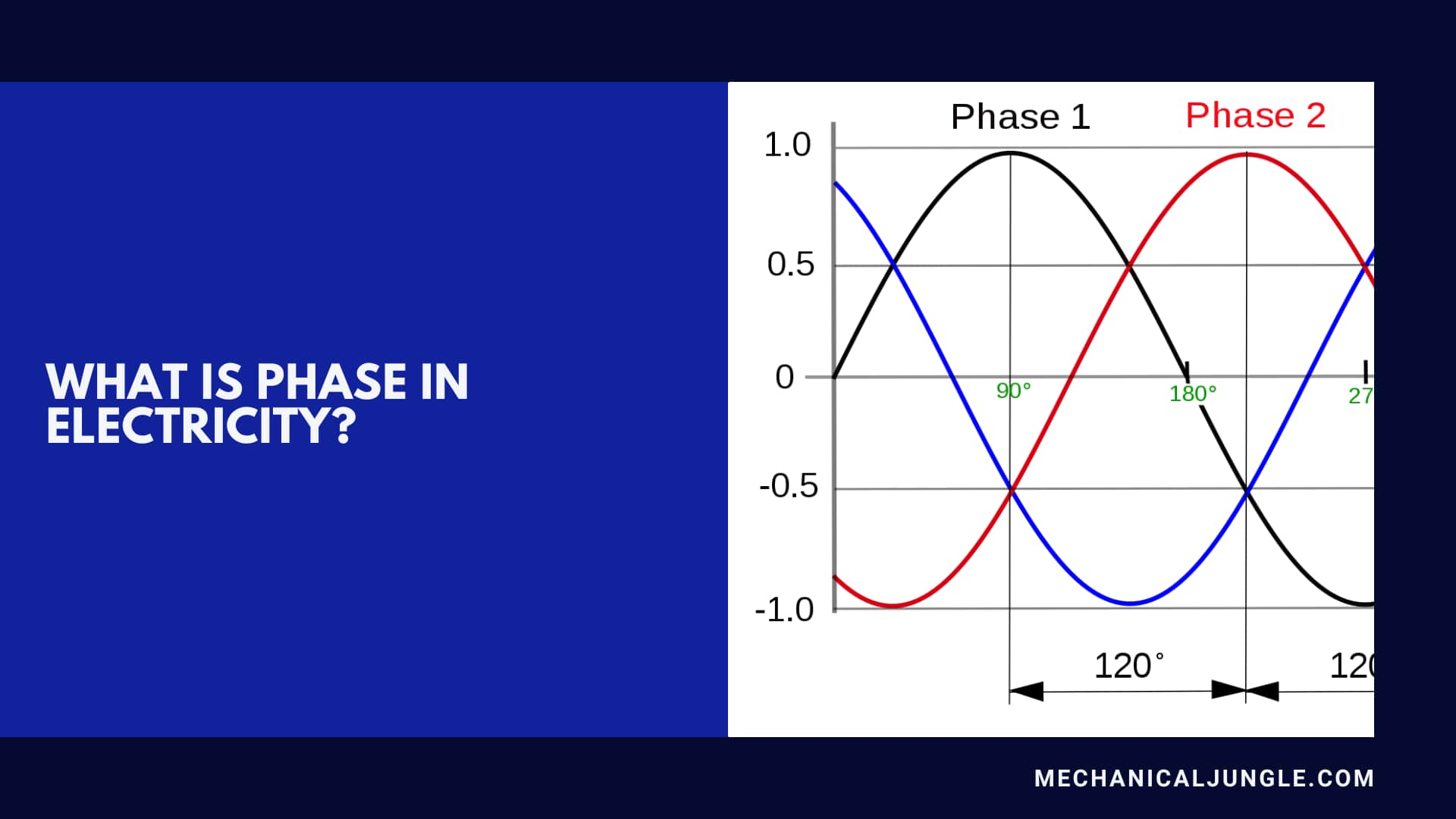
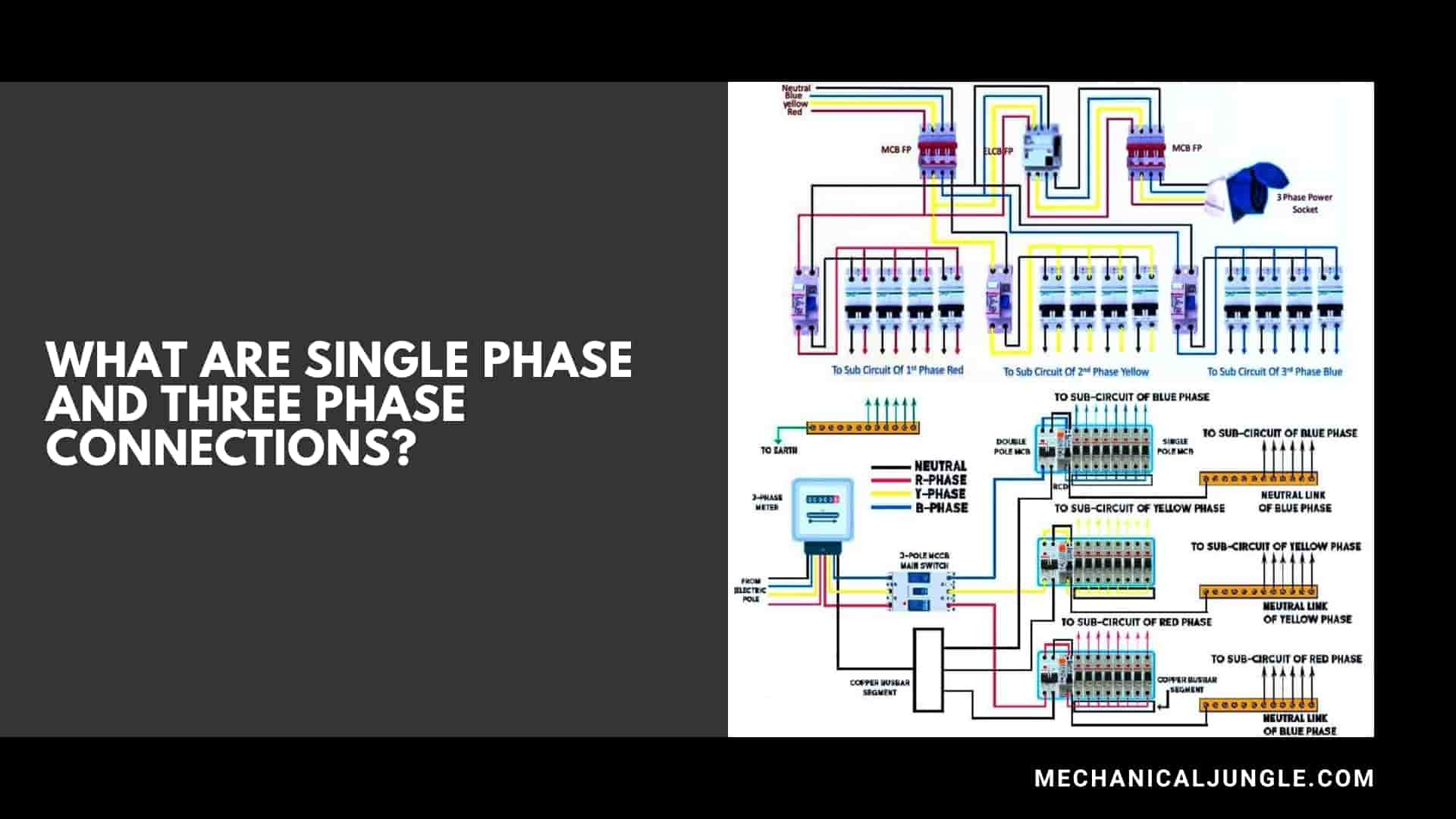
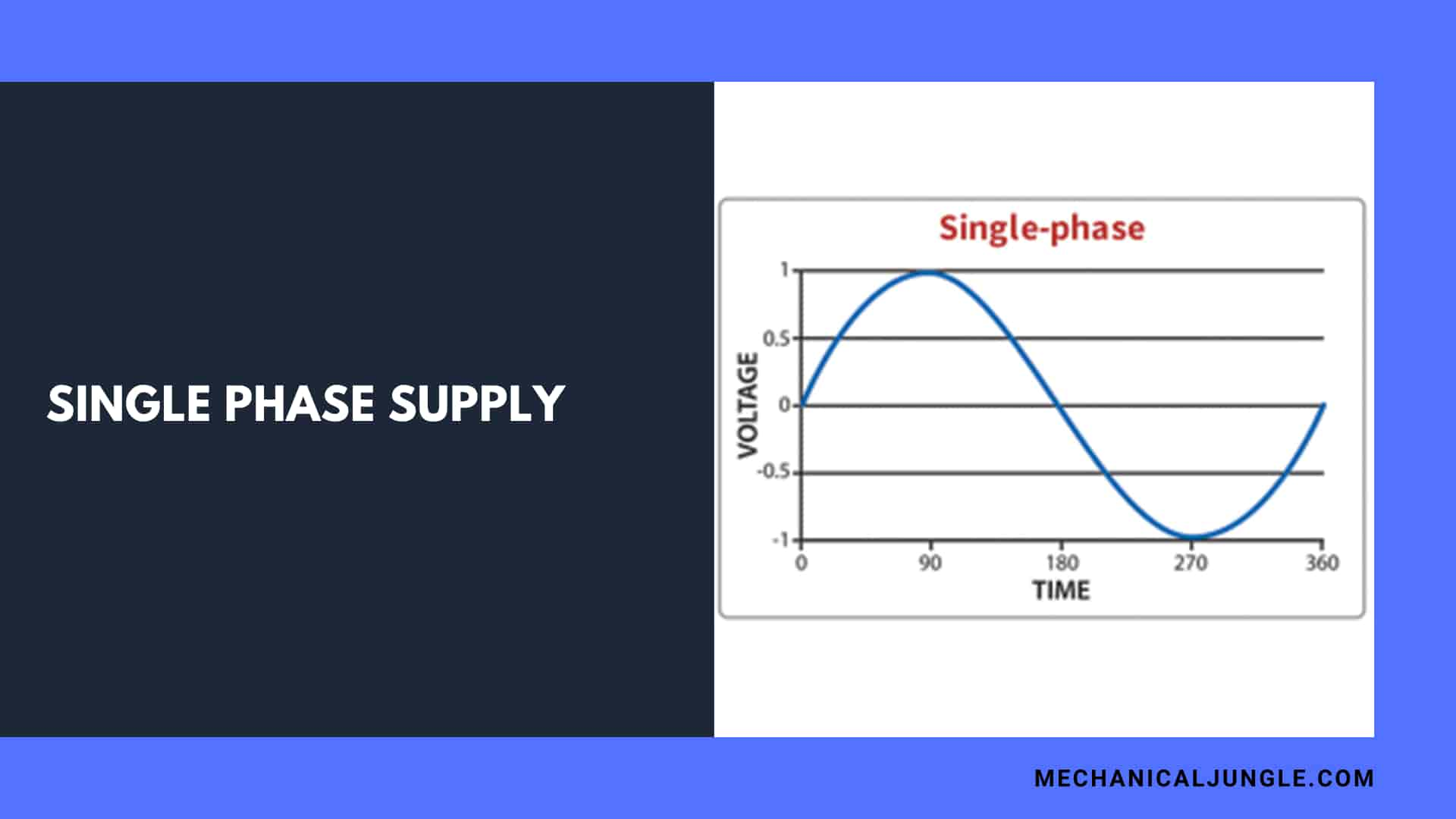

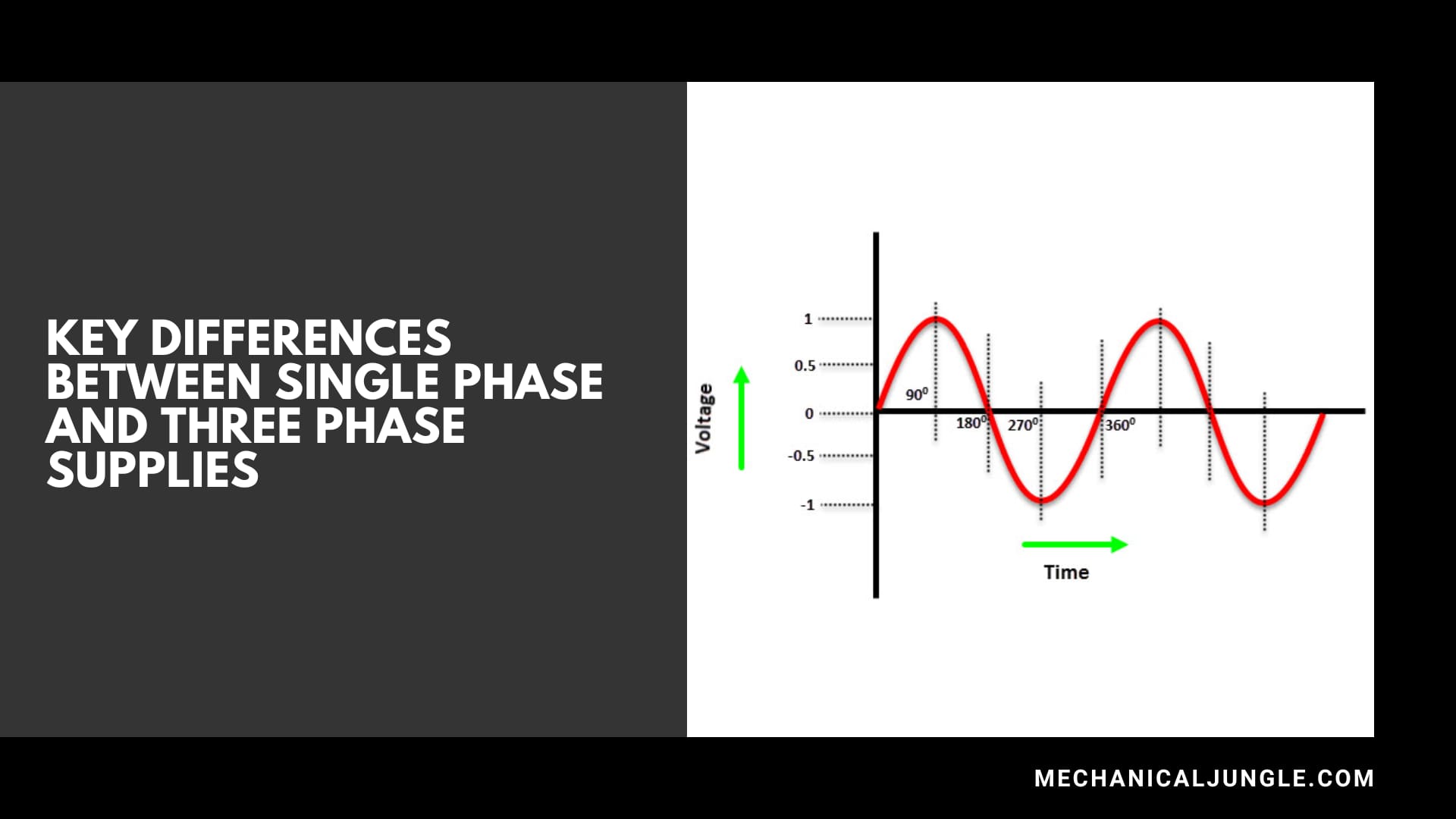
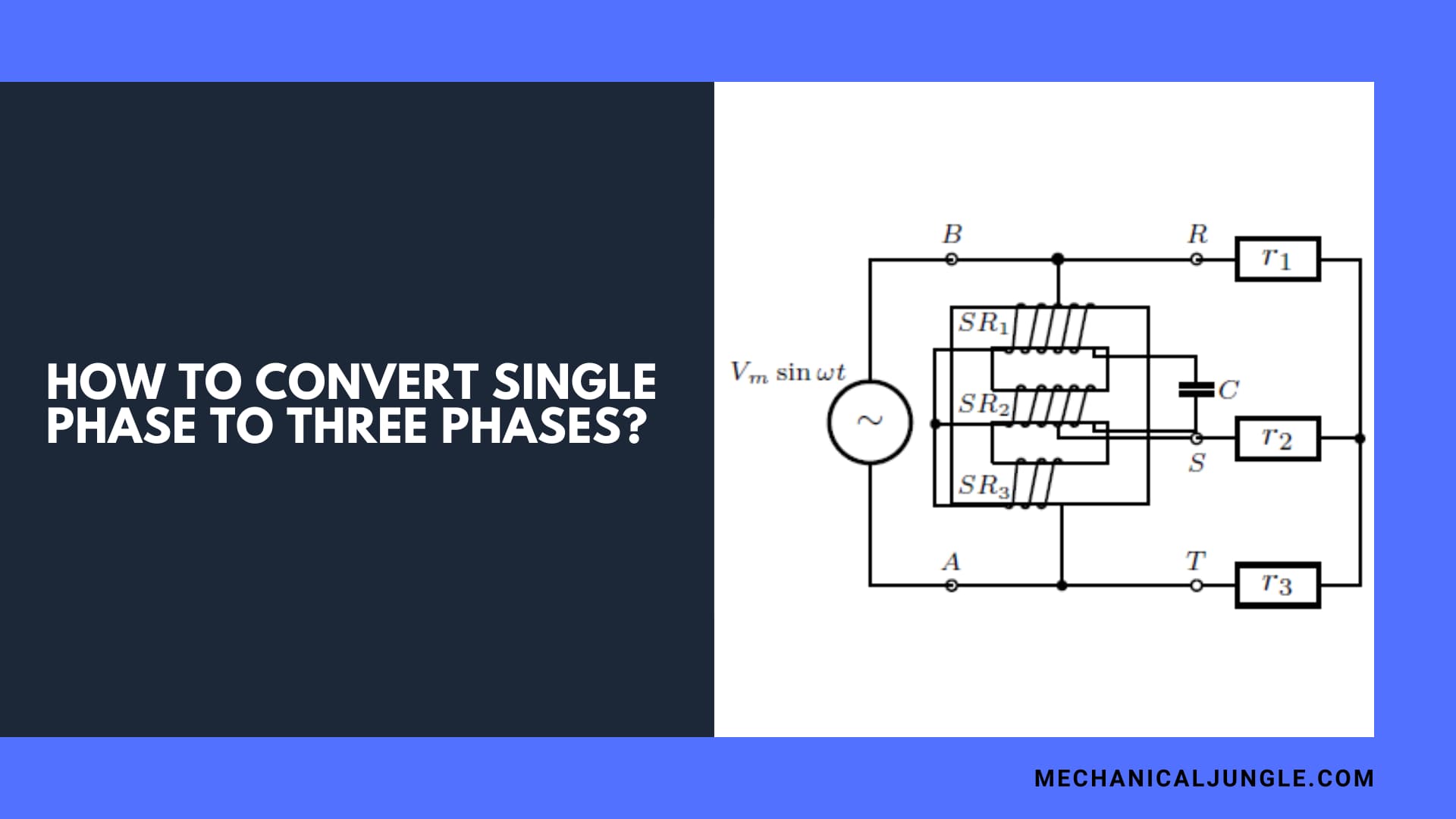

Leave a Reply